|
Centrip Editorial Board
Experience one of Japan's three major Bon dances—give Gujo Odori a try!

Located in the almost exact center of Japan's Gifu Prefecture, a bit further towards the center, around midway between Nagoya and Takayama, is Gujo Hachiman. This area is renowned for the annual Gujo Odori held every summer. Referred to as a dance to participate in, not just watch, locals and tourists alike can easily join the festivities. In this article, we'll share information to enhance your enjoyment of Gujo Odori.
Table of Contents
What kind of festival is Gujo Odori?
Gujo Odori is a traditional Bon dance that has been continued for over 400 years. The term Bon is an abbreviation of the Buddhist ceremony Ullambana (Urabon-e), an ancient religious event in Japan dedicated to commemorating ancestors returning from the afterlife.
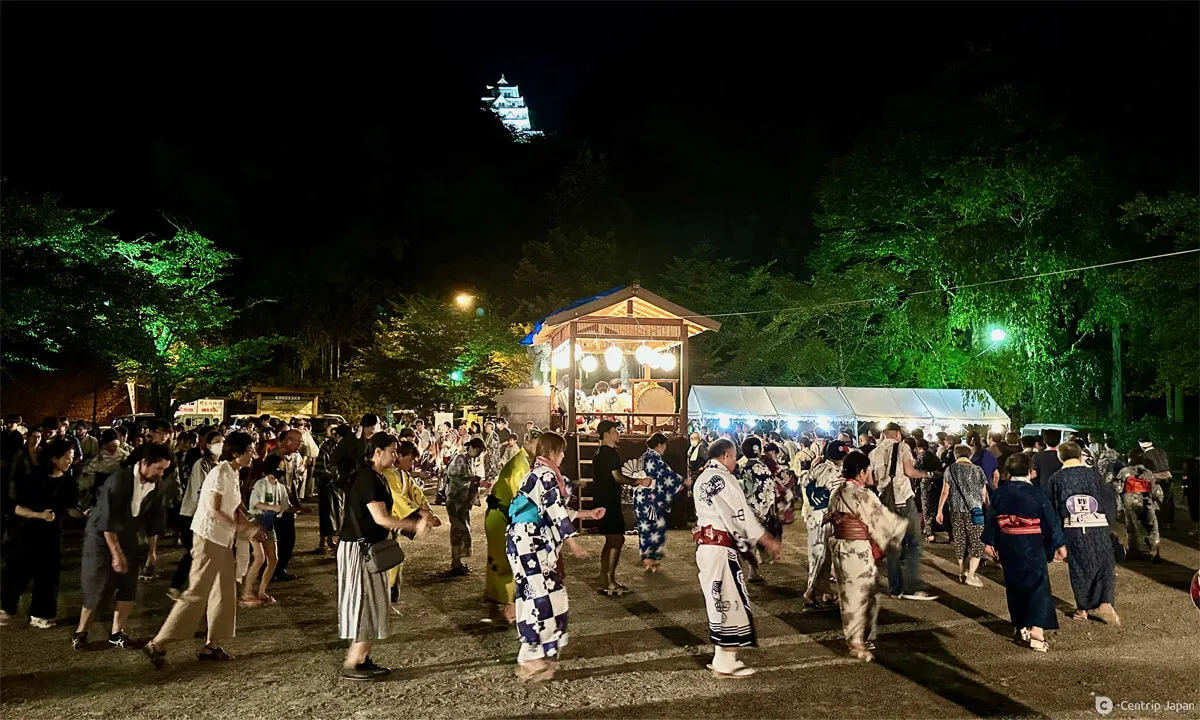 People dancing at the park of Gujo Hachiman Castle
People dancing at the park of Gujo Hachiman Castle
Gujo Odori, held for over 30 nights from mid-July to early September, boasts the longest duration among Bon dances in Japan. It is recognized as one of the Three Great Bon Dances in the country.
The event hours are generally from 8:00 PM to around 10:30 PM on weekdays and Sundays, and from 8:00 PM to around 11:00 PM on Saturdays
The dance venues change daily, touring the town of Gujo Hachiman throughout the event period. One of the attractions is the opportunity to enjoy the charming old streets of the castle town along with the dances.
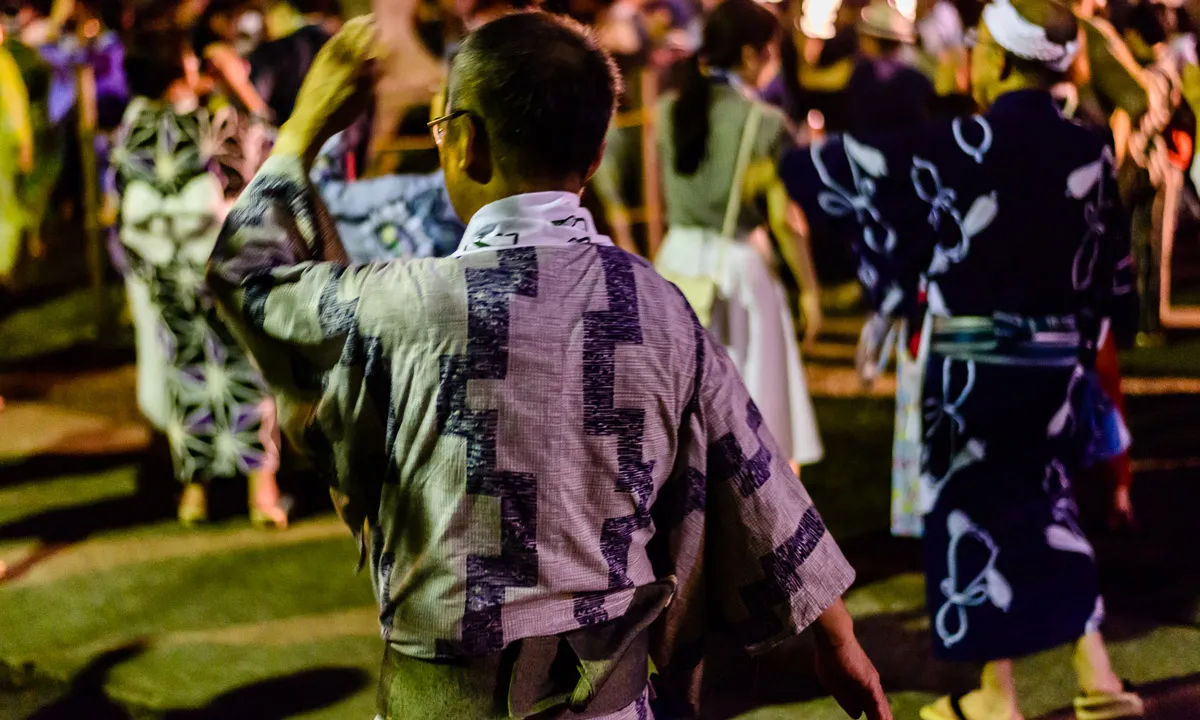 Both locals and tourists join in a circle to dance together
Both locals and tourists join in a circle to dance together
During the event, the liveliest is the All-Night Dance, held for four days from August 13 to 16. Participants dance endlessly from 8:00 PM to around 5:00 AM, creating multiple circles of dance. The surrounding eateries and souvenir shops around the dance venues remain open all night, allowing you to fully immerse yourself in the festival atmosphere. As the schedule is announced annually, it's advisable to check the Gujo Hachiman Tourism Association website or other sources before making plans.
Gujo Odori, visited by people from the local and surrounding regions as well as from various parts of Japan and around the world, was registered in 2022 as one of the Furyu Odori under UNESCO Intangible Cultural Heritage. Continuing the tradition, it is now preserved and passed down as one of the intangible cultural heritages of humanity. With the ongoing efforts of locals and many others, it is sure to be safeguarded and handed down to future generations.
Conquering Gujo Odori
Getting to the Venue
Getting to the Gujo Odori venue is best facilitated by utilizing a rental car and the expressway.
The nearest highway entrance from Nagoya Station is the Meidocho Interchange on the Nagoya Expressway, passing through the Ichinomiya Junction on the Meishin Expressway, and exiting at the Gujo Hachiman Interchange on the Tokai-Hokuriku Expressway. The estimated travel time to the Gujo Hachiman Interchange is about 1 hour and 10 minutes. From the Gujo Hachiman Interchange to the parking lot near the venue, it's approximately a 5-minute drive.
During the All-Night Dance, which attracts numerous visitors, temporary parking lots are set up throughout the city. For specific locations, consult the All-Night Dance Traffic Guide Map provided by the Tourism Section of the Commerce and Tourism Department at the Gujo City Office. Guiding staff will be present around the parking areas to assist, and you can park following their directions. It's within a 15-minute walk from the parking lots to the dance venue. If you park at Hachiman Junior High School, which is farther from the venue, you can use a free shuttle bus to reach the dance venue.
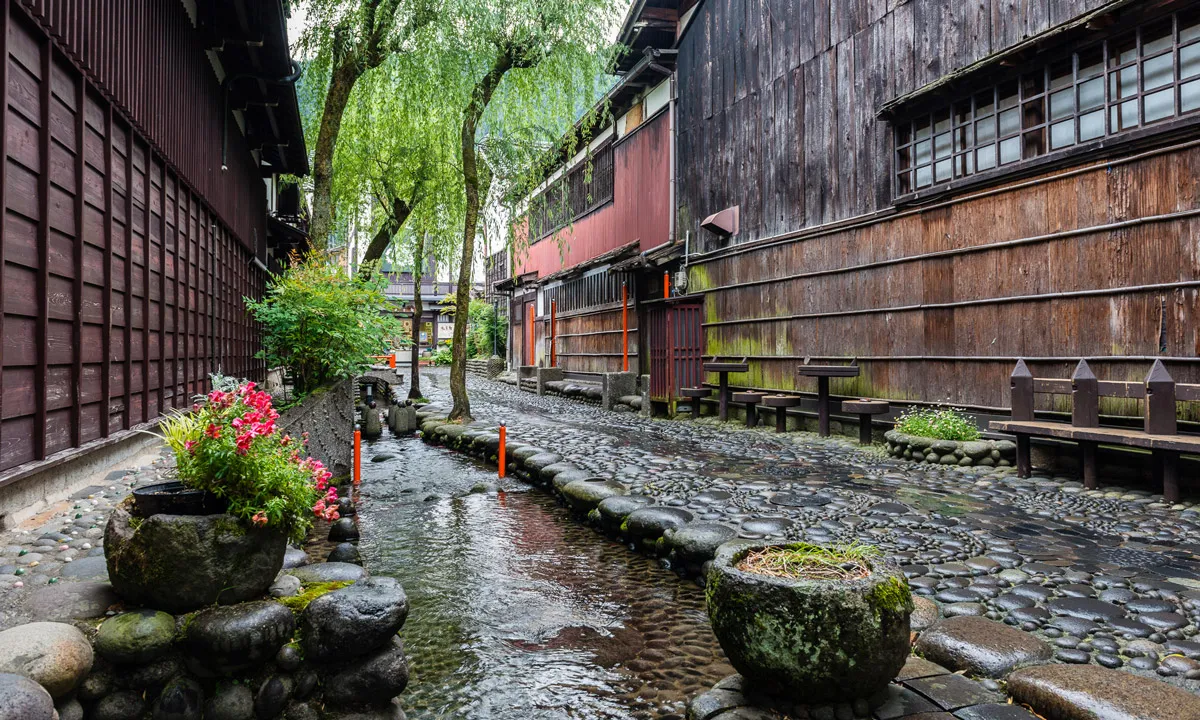 The soothing sound of the river's murmur can be heard from various parts of the
town
The soothing sound of the river's murmur can be heard from various parts of the
town
Before the Bon Dance begins
While the Gujo Odori typically begins around 8:00 PM as the night falls, if you're visiting Gujo Hachiman, it's recommended to enjoy the charming townscape before the dance starts. Known as the Water Town, Gujo Hachiman features beautiful rivers and scenic water landscapes. You can savor local specialties like ayu (sweetfish) and soba, and explore souvenirs, and since it's a small town, a half-day is ample to thoroughly enjoy the experience.
Related articles
How to participate
Gujo Odori is not just a spectacle to watch but a dance to participate in and enjoy. There is no need to register in advance, and anyone, from small children to the elderly, can casually join. Even if you don't know the choreography, you can step into the dance circle and mimic the movements of those dancing on the floats or the people around you. As the dance primarily involves simple repetitive moves, you'll gradually get the hang of it. It's free to enter and exit the circle, and transitions often occur during changes in the music.
Attire
There are no specific rules for attire when participating in the dance, but it's advisable to wear comfortable clothing for ease of movement. For those who want to enhance the festive atmosphere of the Bon dance, participating in a yukata (summer kimono) paired with geta (wooden clogs) is recommended. Yukatas are available for both men and women and can be rented from kimono shops near the venue. For geta, it's a good idea to purchase dance geta, suitable for Gujo Odori, from specialty stores. Choosing the color and design of the hanao (straps) and geta, they can be adjusted to fit your feet on the spot. Having your own personalized pair can make for a perfect souvenir of your journey. Additionally, a tenugui (hand towel) to wipe sweat can be a handy item. Since there are various colors and patterns available, searching for one that suits your taste can be enjoyable.
 Even if you don't know the choreography, go ahead and step into the dance
circle
Even if you don't know the choreography, go ahead and step into the dance
circle
Etiquette
While Gujo Odori is an event open to everyone's enjoyment, there are some points to be aware of. First, it's advised not to eat or drink while dancing. While there are food stalls and eateries near the dance venue, it's not appropriate to participate in the dance while eating or drinking. Hydration should be done away from the dance circle. Also, dancing with improvised choreography is discouraged. Each movement in the choreography has its significance, so instead of moving freely, it's recommended to dance with the same choreography as those around you.
Another point to consider is regarding photography. When capturing the festive atmosphere in photos or videos, it's recommended to take pictures from a distance away from the dance circle. Be mindful not to obstruct the dancers while engrossed in photography. By being considerate of each participant and avoiding inconvenience to others, everyone can share in the enjoyment of this festive time.
The Gujo Odori Festival in 2023
 The Gujo Odori held in 2023, is the first to be held after registration as a UNESCO
Intangible Cultural Heritage
The Gujo Odori held in 2023, is the first to be held after registration as a UNESCO
Intangible Cultural Heritage
Due to the outbreak of the new coronavirus, the Gujo Odori had no choice but to be canceled or held on a reduced scale. However, in 2023, it returned to its regular schedule for the first time in four years.
 Lanterns celebrating the registration as a UNESCO Intangible Cultural Heritage
Lanterns celebrating the registration as a UNESCO Intangible Cultural Heritage
Many people, eagerly awaiting the resumption, gathered for the first day of the All-Night Dance on the 13th. Despite heavy rain at the starting time, the event buzzed with excitement from the 65,000 people who gathered from all over the country. Anticipating the long-awaited restart, crowds gathered at the venue well before the scheduled start time.
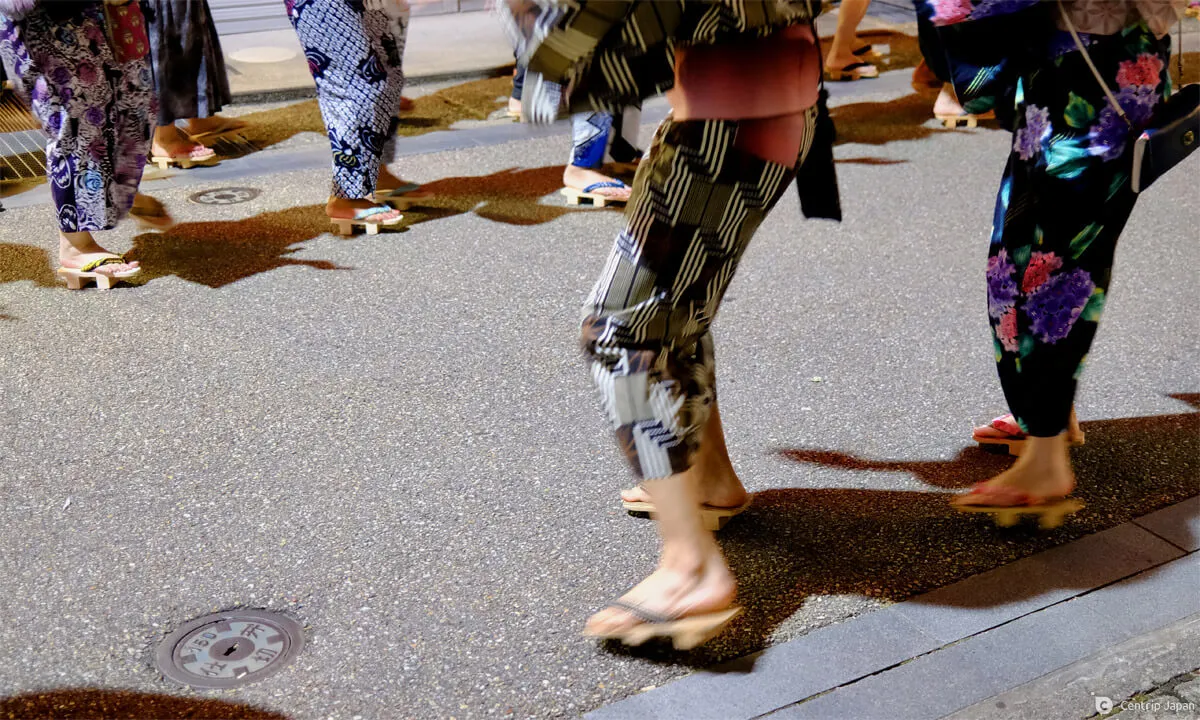 Dancing while letting the pleasant sound of geta (wooden clogs) echo
Dancing while letting the pleasant sound of geta (wooden clogs) echo
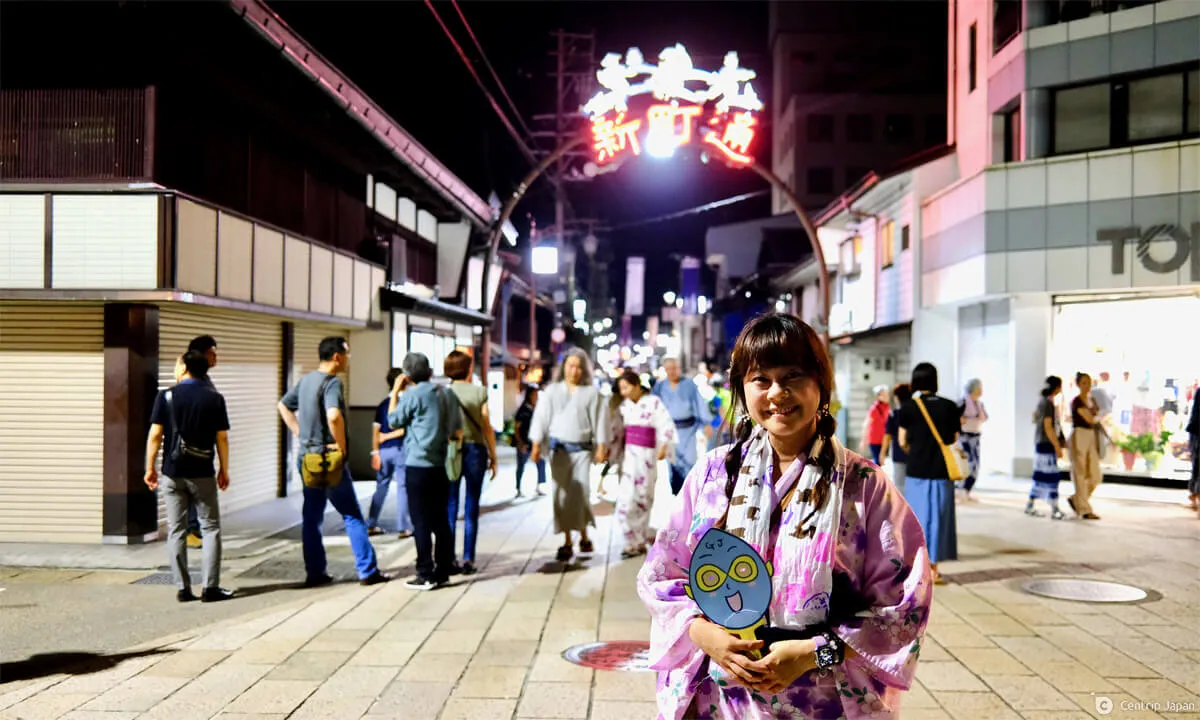 Foreign tourists say, "Even if it's your first time, it's fun to watch others and try
to dance by imitation"
Foreign tourists say, "Even if it's your first time, it's fun to watch others and try
to dance by imitation"
Speaking with a hand towel draped over the shoulder, wearing a yukata and dance clogs, a foreign tourist mentions, "The dance starts at 8:00 PM, so it's charming that you can explore the streets of Gujo Hachiman, engage in local industry experiences like making food samples, and fully enjoy sightseeing before joining."
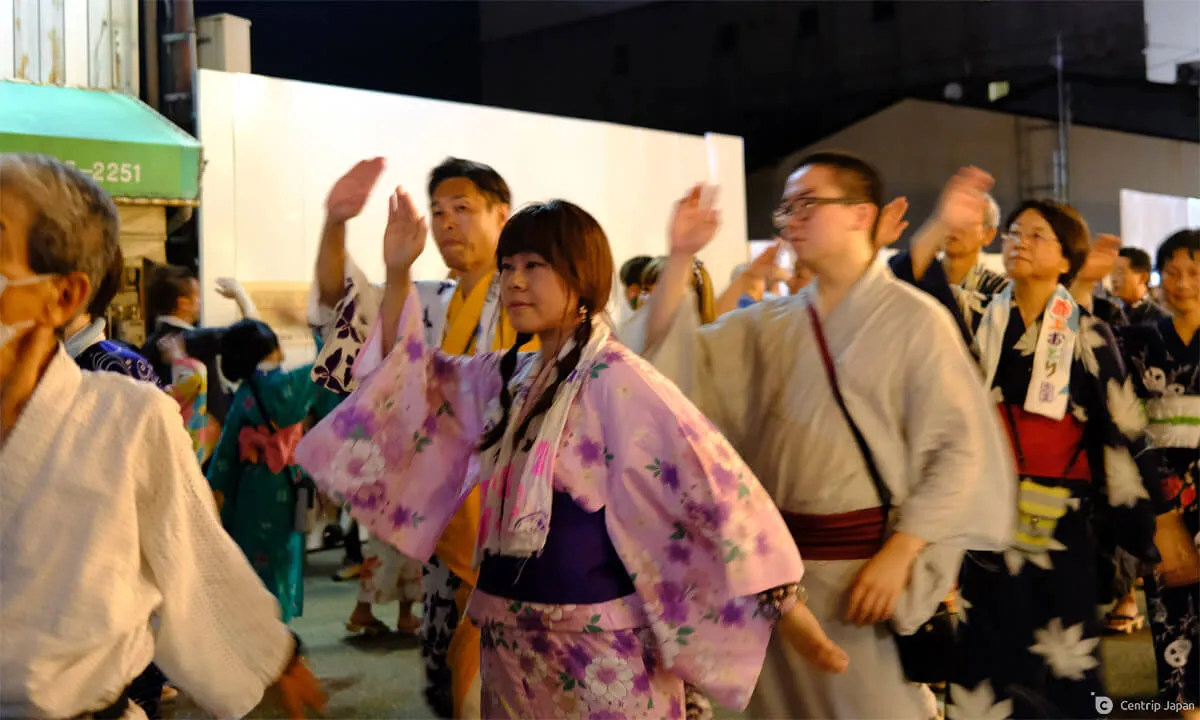 By moving your body while imitating the movements of those around you, you'll
gradually learn to dance
By moving your body while imitating the movements of those around you, you'll
gradually learn to dance
 People take a break while listening to the murmur of the water
People take a break while listening to the murmur of the water
After getting tired from dancing, take a break by stepping away from the circle. If you listen closely, you can hear the sound of flowing water. Since nearby restaurants and souvenir shops are open, it's also a good idea to stop by during your break.
Gujo Odori Preservation Society President, Mr. Tadahira Yamada
 Mr. Yamada encourages everyone to feel free to join
Mr. Yamada encourages everyone to feel free to join
The Gujo Odori Preservation Society is dedicated to preserving and inheriting various skills and cultural aspects related to the dance, including the training of successors, for the future of Gujo Odori. In 2022, we celebrated the 100th anniversary of the establishment of the society.
While facing challenges such as an aging population and diminishing community engagement, the number of people enjoying Gujo Odori increases each year. There is no shortage of enthusiasts who visit annually. Despite actively conducting performances in various regions, including visits to local areas, the 2023 event, held on its regular schedule for the first time in four years due to the pandemic, also featured a simultaneous live broadcast with Canada, Toronto. Despite a 13-hour time difference, 700 people participated in the livestream.
Gujo Odori is a dance that anyone can easily participate in and enjoy. Set against the backdrop of Gujo Hachiman, a picturesque castle town in Japan, take the opportunity to dance and savor the beauty of the town.
Wrap-Up
Gujo Hachiman, where Gujo Odori is held, is accessible by car from Nagoya in about 1 hour and 10 minutes. As it is a small and charming town, you can enjoy a day trip from Nagoya, combining a stroll through the town and experiencing Gujo Odori.
If you head further north from Gujo, you can also visit Takayama and Shirakawa-go. During the summer, you won't have to worry about snow. To experience the historical and traditional dance amidst the charming old town, why not consider visiting Gujo?

